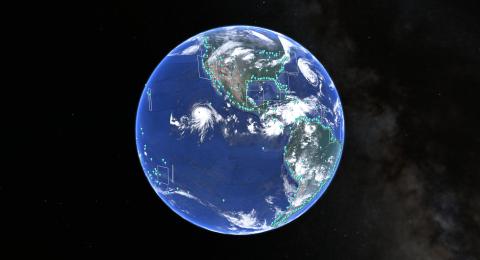Instrument Calibrations
Before GoM solar illumination for primary science scanning begins each day, GLIMR has clear viewing of the large regions of the Atlantic Ocean. These additional data will be collected as necessary for science content and for radiometric and sensitivity calibration using clear water sources in the North Atlantic Gyre.
Late afternoon scanning of the sub-equatorial Pacific violet water, as well as various automated radiometric sites, (e.g. RadCaTS; MOBY), are also used as continuous instrument performance calibration inputs. These scans provide valuable input into the vicarious calibration and atmospheric correction algorithms.
When available, observations of pseudo-invariant calibration sites on land, such as the Sonoran Desert, can also be used to supplement marine measurements. Deep space collects are used to determine zero signal level in each detector. Blind detector data is collected to monitor the drift between deep space acquisitions.
Spectral calibration performance is assessed by observing and tracking Fraunhofer lines in the upwelling light from the Earth. Spatial performance is assessed through scans of the lunar limb or earth scenes with sharp edges, such as the shoreline of the GoM or Baja California, yielding data on instrument modulation transfer function and registration between the GLIMR spectrometer and landmark imager. On-orbit verification of INR performance consists of repeated observations of landmarks and stars to derive geolocation residuals to verify LOS knowledge.
Star Sensing is used to determine static and thermally induced misalignments within GLIMR and between GLIMR and the Host Spacecraft.
The instrument performs lunar calibrations during non-science scan times of the day (night) once or possibly twice per month.
